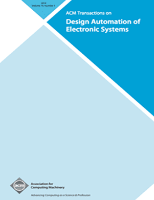
ACM TRANSACTIONS ON DESIGN AUTOMATION OF ELECTRONIC SYSTEMS
Scope & Guideline
Advancing the Future of Electronic Design Automation
Introduction
Aims and Scopes
- Electronic Design Automation (EDA):
The journal extensively covers methodologies, tools, and frameworks that facilitate the automation of electronic design processes, including circuit design, verification, and testing. - Hardware Security:
A significant focus is placed on the security aspects of hardware design, including techniques to mitigate vulnerabilities, adversarial attacks, and the design of secure systems. - Machine Learning Applications in Design Automation:
There is a growing emphasis on applying machine learning techniques to improve various aspects of design automation, such as optimization, verification, and fault detection. - Energy Efficiency and Thermal Management:
Research on optimizing energy consumption and managing thermal performance in electronic systems is a core area, addressing the increasing demand for energy-efficient designs. - Novel Hardware Architectures:
The journal explores innovative hardware designs, including architectures for specialized applications like neural networks and edge computing, enhancing performance and efficiency. - Reliability and Testability:
Studies aimed at improving the reliability of electronic systems through design for testability (DFT) and fault tolerance are regularly featured. - Integration of Emerging Technologies:
Research on the integration of new technologies such as quantum computing, neuromorphic computing, and 3D integration into electronic systems is increasingly prominent.
Trending and Emerging
- Machine Learning and AI in Design Automation:
The application of machine learning and artificial intelligence in optimizing design processes, fault detection, and performance prediction has seen a significant rise, as these technologies offer powerful tools for enhancing efficiency. - Security in Hardware Design:
Research focusing on the security of hardware systems, including countermeasures against side-channel attacks and hardware trojans, has gained substantial attention, emphasizing the importance of secure design practices. - 3D Integration and Heterogeneous Systems:
The exploration of 3D integration techniques and heterogeneous computing systems is trending, driven by the need for higher performance and reduced power consumption in modern applications. - Energy Harvesting and Management Techniques:
Innovative approaches to energy harvesting and management in electronic systems are emerging, driven by the growing demand for sustainable and energy-efficient designs. - Adaptive and Reconfigurable Systems:
There is an increasing focus on adaptive and reconfigurable hardware architectures that can dynamically adjust to changing workloads, enhancing flexibility and efficiency in various applications.
Declining or Waning
- Traditional VLSI Design Techniques:
Classic techniques in VLSI design, such as manual layout and conventional circuit optimization, are becoming less frequent as automated and machine learning-driven approaches gain traction. - Basic Circuit Design:
Research focused solely on fundamental circuit design principles without integrating advanced methodologies or tools is less prevalent, reflecting a shift towards more complex and integrated approaches. - Static Verification Methods:
Static verification methods are witnessing a decline as dynamic and hybrid approaches, which often yield better accuracy in practical scenarios, become more favored. - Conventional Approaches to Fault Tolerance:
Traditional fault tolerance methods are being overshadowed by innovative solutions that incorporate machine learning and adaptive techniques to enhance reliability.
Similar Journals

Jordan Journal of Electrical Engineering
Connecting Ideas, Inspiring Solutions in EngineeringJordan Journal of Electrical Engineering, published by TAFILA TECHNICAL UNIVERSITY (TTU) in Jordan, serves as a critical platform for disseminating groundbreaking research in the fields of electrical engineering, energy systems, and related disciplines. With an ISSN of 2409-9600 and an E-ISSN of 2409-9619, the journal is committed to promoting advancements in energy engineering, biomedical applications, control systems, and signal processing among others. Despite its recent establishment in 2023, it has been indexed in multiple categories within Scopus, receiving rankings that reflect its emerging role in the academic community. Researchers and professionals are encouraged to contribute and access cutting-edge articles through open access options, ensuring that knowledge is readily available to all interested parties. As the journal continues to grow, it aims to bridge gaps in knowledge and stimulate dialogue, thereby supporting innovation and practical applications in the engineering sector.
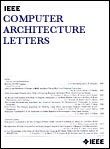
IEEE Computer Architecture Letters
Driving Breakthroughs in Performance Optimization.IEEE Computer Architecture Letters is a distinguished academic journal published by the IEEE Computer Society, focusing on the dynamic field of computer architecture. With its ISSN 1556-6056 and E-ISSN 1556-6064, this journal has been a vital platform for disseminating groundbreaking research since its inception in 2002. As of 2023, it holds an impressive impact factor, being ranked Q2 in Hardware and Architecture, placing it among the top tier of journals in this domain (Scopus Rank #74/177). The journal aims to promote innovative ideas and developments in computer architecture that drive advancements in technology and engineering. Although it does not currently offer open access, it remains a pivotal resource for researchers, industry professionals, and students keen on exploring emerging trends and methodologies. Each published article contributes to a deeper understanding of hardware design, performance optimization, and architectural innovations, establishing IEEE Computer Architecture Letters as a cornerstone of academic excellence in the field.

Australian Journal of Mechanical Engineering
Championing Excellence in Mechanical Engineering Research and Application.The Australian Journal of Mechanical Engineering is a distinguished publication in the realm of mechanical engineering, dedicated to advancing the knowledge and application of engineering principles within the industry. Published by TAYLOR & FRANCIS LTD in the United Kingdom, this journal has been integral to the field since its inception, featuring a range of peer-reviewed research articles, reviews, and technical notes that collectively aim to bridge theoretical research with practical applications. With an impressive Scopus ranking of #271 out of 672 in Mechanical Engineering, positioning it within the 59th percentile, the journal continues to uphold rigorous academic standards, currently occupying Q3 in the 2023 quartile rankings. Researchers, professionals, and students alike will benefit from its comprehensive coverage and insightful contributions, providing a vital platform for knowledge exchange and innovation in mechanical engineering.
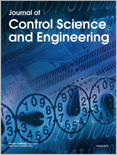
Journal of Control Science and Engineering
Advancing the Frontiers of Control Science and EngineeringThe Journal of Control Science and Engineering, published by HINDAWI LTD, is a prominent open-access journal that has been disseminating pioneering research since 2007. With its ISSN 1687-5249 and E-ISSN 1687-5257, the journal serves as a crucial platform for researchers, professionals, and students engaged in the fields of Computer Science Applications, Electrical and Electronic Engineering, and Modeling and Simulation. Holding a Q3 quartile ranking in 2023 across these categories, the journal maintains rigorous academic standards and is recognized for its contributions to advancing knowledge and technology in control science. The journal's current Scopus rankings highlight its significance, with impressive percentiles placing it within the top tier of its fields. Readers can access a wide range of high-quality research articles through its open access model, further establishing the journal as an essential resource for anyone seeking to broaden their understanding and application of control principles.

Electronics
Pioneering Discoveries in Electrical EngineeringElectronics, published by MDPI since 2012, stands as a pivotal open-access journal that caters to a wide spectrum of disciplines within the electrical and electronic engineering domain. With a strong commitment to disseminating innovative research, this journal has garnered notable recognition, achieving a Q2 ranking in multiple pertinent categories, including Computer Networks and Communications, Control and Systems Engineering, and Signal Processing. Its editorial standards and open-access format enhance the visibility and accessibility of high-quality research, making critical advancements in technology available to a global audience. Located in Switzerland, the journal is positioned to foster international collaboration and dialogue among researchers, professionals, and students dedicated to exploring the evolving landscape of electronics and its applications. With an E-ISSN of 2079-9292, the journal is meticulously indexed in reputable databases like Scopus, further solidifying its relevance and influence in the engineering community.

Facta Universitatis-Series Electronics and Energetics
Pioneering Research for a Sustainable Energy Future.Facta Universitatis-Series Electronics and Energetics is a prestigious open-access journal published by UNIV NIS, focusing on the fields of electronics and energy systems. With its commitment to disseminating cutting-edge research since 2004, the journal plays a significant role in fostering innovation and collaboration among scholars and practitioners in these vital disciplines. The journal welcomes a broad spectrum of topics, including electronic engineering, renewable energy technologies, energy efficiency, and smart grid solutions. As an accessible research outlet, it caters to a global audience, making high-quality research available to everyone regardless of geographic or institutional barriers. Researchers, professionals, and students will benefit from the journal's diverse contributions, ensuring they stay at the forefront of developments in electronics and energetics. The journal has established its authority within the field, enhancing visibility and engagement opportunities for authors and readers alike.

IEEE Canadian Journal of Electrical and Computer Engineering
Fostering Global Collaboration in Engineering ExcellenceWelcome to the IEEE Canadian Journal of Electrical and Computer Engineering, an esteemed publication by IEEE CANADA, dedicated to advancing the field of electrical and computer engineering. Since its inception in 2021, this journal has served as a vital platform for scholarly communication, encouraging the dissemination of innovative research and practical applications within the realms of electrical and electronic engineering, as well as hardware and architecture. With an impressive Q3 ranking in both categories for 2023, the journal is gaining recognition among academics and professionals alike, asserting a solid position within the competitive landscape of engineering publications. The journal is accessible as an open access resource, ensuring that groundbreaking studies are made available to a global audience, fostering collaboration and knowledge transfer. Published in Canada, the journal aims to highlight research from this vibrant region while also welcoming contributions from international experts, ultimately propelling scholarly discourse in electrical and computer engineering forward.
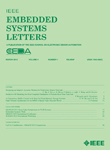
IEEE Embedded Systems Letters
Advancing Embedded Innovation, One Letter at a Time.IEEE Embedded Systems Letters is a prominent scholarly journal dedicated to advancing the field of embedded systems engineering, published by the IEEE - Institute of Electrical and Electronics Engineers. Since its inception in 2009, this journal has become an essential resource for researchers, practitioners, and students, offering a platform for the dissemination of innovative research and technological advancements in embedded systems. With an esteemed Q2 ranking in both Computer Science (miscellaneous) and Control and Systems Engineering, it ranks within the top half of the field, reflecting its impact and relevance. The journal covers a wide array of topics, including hardware-software co-design, real-time systems, and system-on-chip architectures, making it an invaluable reference for those engaged in the development of cutting-edge technologies. Subscribers benefit from exclusive access to rigorously vetted articles, conference reports, and reviews, contributing to the vibrant dialogue within the embedded systems community. With its commitment to excellence, IEEE Embedded Systems Letters serves as a critical avenue for fostering collaboration and innovation in this rapidly evolving domain.
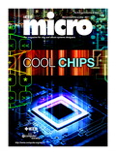
IEEE MICRO
Leading the Charge in Cutting-Edge Engineering ResearchIEEE MICRO is a prestigious journal published by the IEEE Computer Society, focusing on the latest advancements in the fields of electrical and electronic engineering, hardware, and software architecture. With a remarkable track record since its inception in 1981, this influential journal holds a Q1 classification in its respective categories, underscoring its significant impact in research and practical applications. The journal enjoys an impressive ranking within the 80th percentile in Electrical and Electronic Engineering and the 78th percentile in Hardware and Architecture, further cementing its reputation among the academic and professional community. Though not an open access journal, IEEE MICRO provides vital insights and cutting-edge research findings that shape the future of technology, making it an essential resource for researchers, practitioners, and students eager to stay at the forefront of innovation.
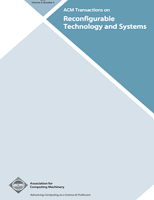
ACM Transactions on Reconfigurable Technology and Systems
Fostering Breakthroughs in Adaptive System DesignACM Transactions on Reconfigurable Technology and Systems is a leading journal in the field of computer science, specifically focusing on the rapidly evolving area of reconfigurable technology. Published by the esteemed Association for Computing Machinery, this journal provides a vital platform for researchers and practitioners to share groundbreaking findings and innovative methodologies that drive advancements in system design, architecture, and implementation. The journal boasts a commendable impact factor and has positioned itself within the top quartile (Q1) of computer science journals as of 2023, with a notable Scopus rank of #64 out of 232 in the General Computer Science category, placing it in the 72nd percentile. As a trusted resource for the latest developments from 2008 to 2024, the journal encourages submissions that challenge conventional approaches and propose novel solutions in reconfigurable technologies. Although it is not open access, it continues to strive for accessibility and dissemination of knowledge that is critical for academics, industry professionals, and students alike.